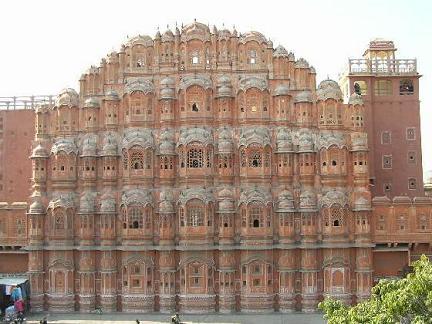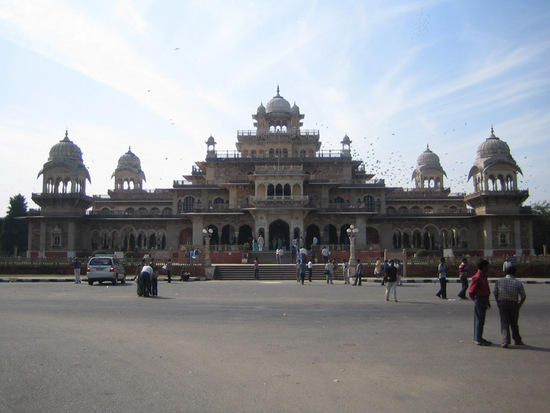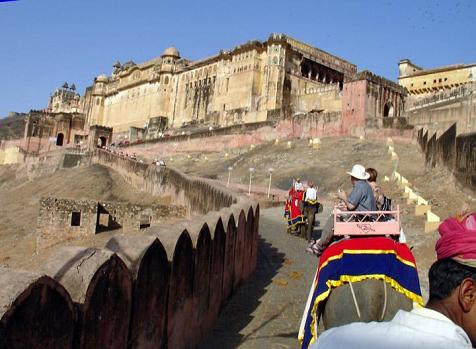
History of jaipur jaipur was founded in 1727 by Maharaja Sawai Jai Singh II who ruled from 1699-1744 and initially his capital was Amer , which is far from jaipur 11 km . He felt the need of shifting his capital city with the increase in population and growing scarcity of water. jaipur is the first planned city of India. The King consulted several books on architecture and architects before making the lay out of jaipur. Finally under the architectural guidance of Vidyadar Bhattacharya, jaipur came into existence on the classical basis of principals of vastushastra and other similar classical treatise. After several battles with Marathas, Maharaja Sawai Jai Singh II was keen on the security aspect of the city. Being a lover of Astronomy, mathematics and Astro-Physics, Jai Singh also sought advice from Vidyadhar Bhattacharya, a Brahmin scholar of Bengal, to aid him to design many other buildings including Royal Palace in the center of the city. The construction of the city started in 1727. It took around 4 years to complete the major palaces, roads and square. The city was built following the principles of Shilpa Shastra, the Indian Architecture. The city was divided into nine blocks, of which two consist the state buildings and palaces, with the remaining seven allotted to the public. Huge fortification walls were made along with seven strong gates.  For the time, architecture of the town was very advanced and certainly the best in Indian subcontinent. In 1853, when the Prince of Wales visited jaipur, the whole city was painted pink to welcome him during the regime of Sawai Ram Singh. Today, avenues remain painted in pink, provide a distinctive appearance to the city. In the 19th century the city grew rapidly by 1900 it had a population of 160,000. The city's wide boulevards were paved and lit with gas. The city had several hospitals. Its chief industries were in metals and marble, fostered by a school of art founded in 1868. The city also had three colleges, including a Sanskrit college (1865) and a girls' school (1867) initiated under the reign of the enigmatic Maharaja Sawai Ram Singh II. There was also a wealthy and enterprising community of native bankers, particularly the Jain, Marwaris and the administrators Kayastha. The capital of Rajasthan, jaipur is most natural place to begin a discovery of Rajasthan's multifaceted attractions. The city actually takes its name from a princely state called jaipur State that existed sometime during the 12th century. This state was home to the Kachwaha Rajput clan. The state was founded in the year 1097 AD by a man named Dulaha Raya, who came from Gwalior. They drove out the local Meenas and the Bargujar Rajput chiefs and settled over here.  Architecture of jaipur jaipur is rich in its cultural and architectural beauty, which can be traced in the various historical and aesthetic places that reside in the city. This city of victory really wins the hearts of the people with its splendid charisma. The city was built following the principles of Shilpa Shastra, the Indian Architecture. The directions of each street and market are east to West and North to South. The Eastern gate is called Suraj (Sun) Pol, while the Western gate is called Chand (Moon) Pol. There are only three gates facing East, West, and North including the Northern gate (known as Zorawar Singh gate) which faces toward the ancestral capital of Amber, while many gates face South. Although the present city has expanded from outside of its walls, the original planning was within the walls. The gates used to be closed at sunset and opened at sunrise. Almost all Northern Indian towns of that period presented a chaotic picture of narrow twisting lanes, a confusion of run-down forts, temples, palaces, and temporary shacks that bore no resemblance at all to the principles set out in Hindu architectural manuals which call for strict geometric planning. According to that time, architecture of the town was very advanced and certainly the best in Indian subcontinent. In 1853, when Prince of Wales visited jaipur, the whole city was painted in Pink color to welcome him. Still, the neat and broadly laid-out avenues, painted in pink provide a magical charm to the city. |

